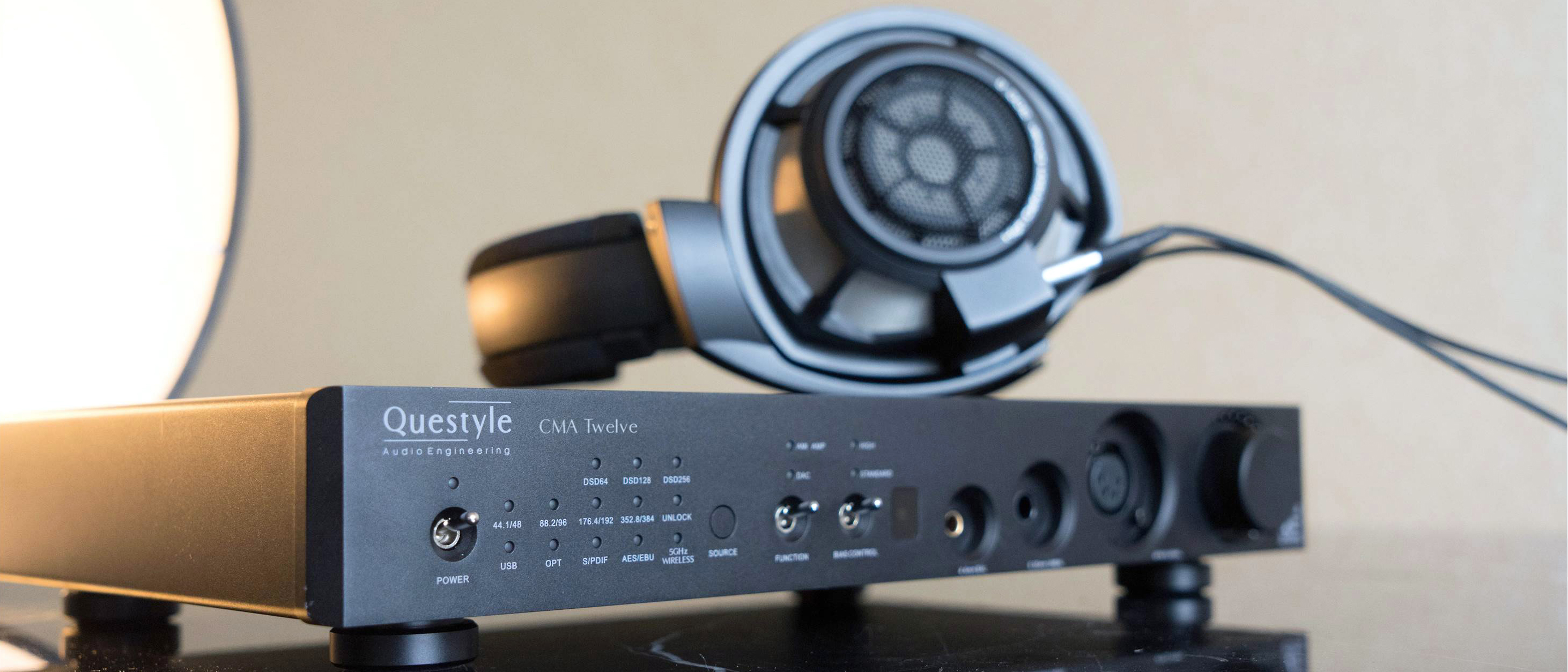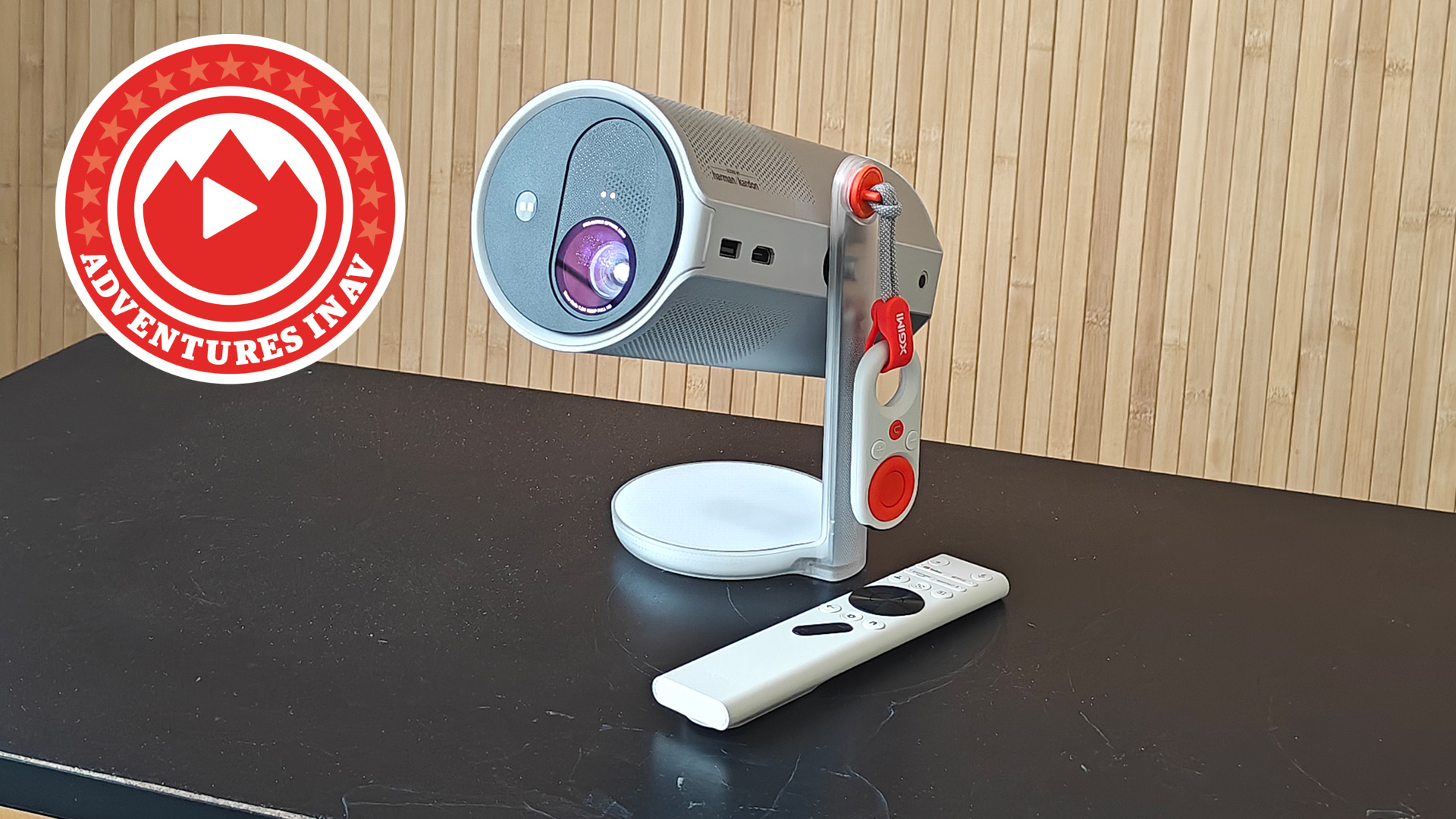Sound+Image Verdict
As well as a hub and high-quality DAC for your system’s digital sources, Questyle’s CMA Twelve also proves a fine headphone amplifier able to drive even the most esoteric of headphone designs.
Pros
- +
Brilliant headphone amplifier
- +
Versatile DAC
- +
Balanced headphone support
Cons
- -
No MQA support
- -
No analogue input
Why you can trust What Hi-Fi?

This review and test originally appeared in Best Buys Audio & AV magazine, one of What Hi-Fi?’s sister titles from Down Under. Click here for more information about purchasing Best Buys digitally or in print.
Digital-to-analogue converters – DACs – are ubiquitous these days, taking the signals from our modern digital sources and computers, converting them to analogue before amplification. But like everything else in home entertainment technology, their quality varies.
At one end of the scale there is that little white dongle to go between your iPhone 7 (or later) and your wired headphones of choice. At the other end are high-quality units like the Questyle CMA Twelve, which is one of the breed designed to operate both as a versatile DAC, and as a high-quality headphone amplifier.
Equipment
So the Questyle CMA Twelve is a versatile slab of electronics. As a DAC you can use it for all likely forms of digital audio, since it’s equipped (see back panel below) with one input each for optical digital audio, coaxial digital audio, AES/EBU digital audio (this is the standard used in studios) and for computer audio delivered via a USB-B input. The unit has no analogue inputs at all.
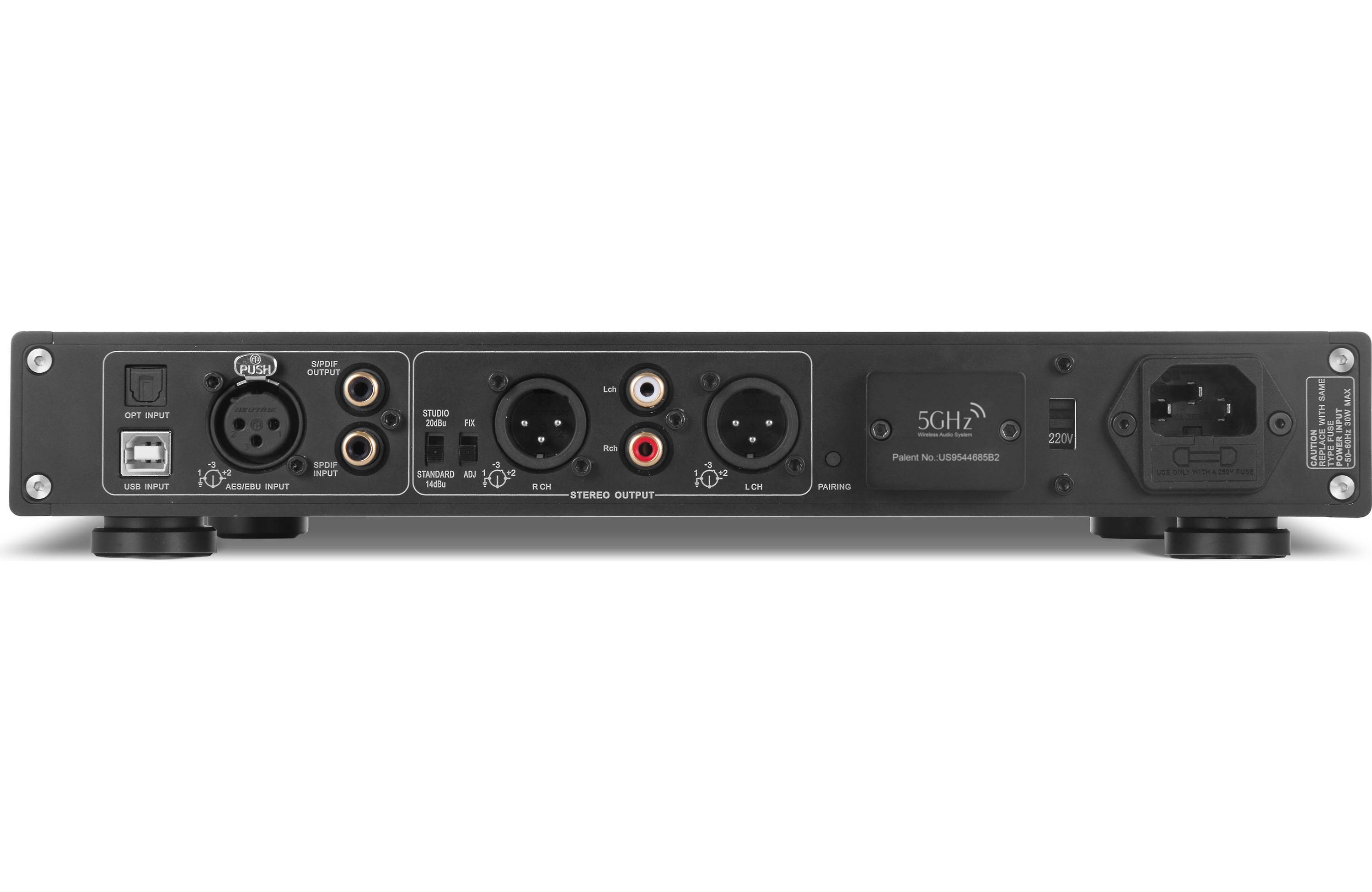
And you wouldn’t expect any on a normal DAC, but you might on a headphone amplifier, so just note that you cannot use the Questyle CMA Twelve as a headphone amplifier for listening to analogue source devices.
One last input is a 5GHz wireless receiver, included for use in concert with some other Questyle products. Not having those to hand, we didn’t pursue this option.
Also at the back are outputs on a choice of unbalanced stereo RCA and balanced XLR sockets. A small switch usefully allows you to set these for variable or fixed output level.
The three headphone outputs are at the front. One is the familiar 6.35mm unbalanced stereo socket. The other two are for balanced headphones: one is a 4-pin XLR while the
other is a 4.4mm TRRRS socket – the new standard for balanced headphones, gradually spreading through the industry, so you can expect an increasing number of future headphones to come with this balanced connection. Some small switches on the underside of the unit allow you to reduce the gain of the headphone stage by 10dB should you have very sensitive headphones.
The optical, coaxial and AES/EBU digital inputs support PCM signals up to 24-bit/192kHz. The computer USB input goes way beyond that, all the way up to
32-bit/ 384kHz PCM, and Direct Stream Digital in its regular, double-speed and quad-speed forms (aka DSD64, DSD128 and DSD256). It handles DSD in both native and DoP formats (which means that if your computer and software can deliver DSD, the Questyle CMA Twelve DAC will support it).
The unit does not support MQA decoding, though. MQA has carved itself a niche in the audiophile community, primarily for streaming from the TIDAL service. So is lack of support for MQA a deal-breaker with this DAC? No, far from it. If the stream is high resolution, you can use the TIDAL app itself to do the first level of unfolding, taking the effective sampling rate up to 88.2/96kHz. So while you can’t do a ‘double unfold’, the main thing you’ll be missing is the MQA certification function.
The headphone amplifier is rated at 247mW into 300-ohm unbalanced headphones and 825mW into balanced ones. The output into low impedances such as 32 ohms has been limited to 1200mW balanced. Signal-to-noise is rated at 112dB unweighted. For 192kHz sampling, the high frequency extension is rated to 80,000Hz at -3dB.
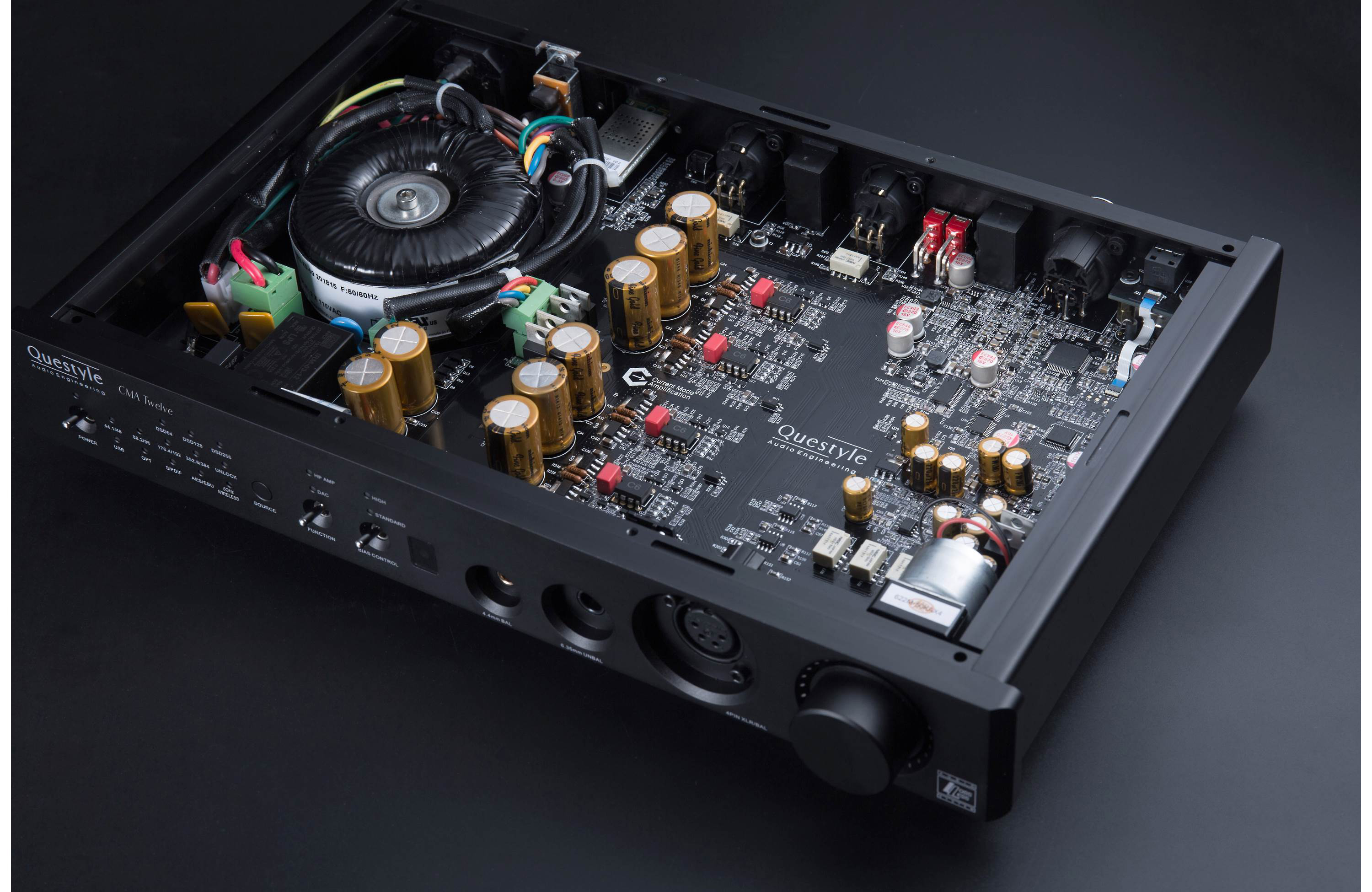
We reviewed the ‘Standard’ Questyle CMA Twelve DAC. But also available is a ‘Master’ unit, which has been enhanced with higher grade components (and other colour options), and which is priced at $2000 / AU$3000.
Installation
We’ll come to the Questyle’s excellent headphone amplifier shortly, but let’s run through the DAC side of things first. Windows computers work best with a driver for this kind of DAC. There was a driver on the included CD, but so many computers don’t have CD drives these days, and in any case one should always go to the website for the most up-to-date version.
And the USB driver we downloaded from there was compressed into an RAR file, which is a bit daft, since RAR is not natively supported by Windows, so that many will have to go searching for a trial RAR decompresser program and install that first. Everything Windows-related should be zipped, although since this driver is all of 5MB in size, why compress it at all!
Once we had the driver uncompressed, it installed easily on our Windows computer. You don’t need any driver for Macs, but we did have to make one setting change for the Questyle CMA Twelve DAC to work properly with DSD files.
The manual just says to set the Sound Output in System Preferences to ‘xCORE USB Audio 2.0’. And this worked fine for PCM but the DSD had a lot of hashy white noise overlaid on it. We found the solution in Mac’s ‘Audio MIDI Setup’ preferences. The Output format for the xCORE USB Audio 2.0 device was set to 16 bits. We changed it to 24 bits and all was fine thereafter.

Indicator lights on the front panel show you which signal standard the DAC is receiving, so you can check to make sure that you’ve got your devices set up correctly. A switch on the front panel selects between line and headphone outputs.
Another switch adjusts the ‘bias level’ for the headphone output. This has something to do with the amplifier architecture Questyle employs: Current Mode Amplification. We couldn’t hear a repeatable difference between the two settings of this on any of the headphones we used.
Listening
We used the Questyle CMA Twelve in several ways – via the line outputs and via the headphone outputs, with several different sets of headphones, all unbalanced. A well-designed headphone output stage and a competently-crafted unbalanced headphone cable will provide astonishingly good sound.
It turns out that the Questyle CMA Twelve does indeed have a well-designed output stage for headphones. We’ll get into some measurements later which prove the case from a technical point of view, but when it came to listening, the results with headphones were as good as we’ve ever experienced. The line output performance was equally brilliant.
In the end, it didn’t really matter which of our headphones we used: Focal Elear, Beyerdynamic Amiron Home, a pair of (20-year-old) Sennheiser HD 535s, or the in-ear Final Audio B3. Each of them clearly realised their full potential when driven by the Questyle CMA Twelve.
We mostly used the Focal headphones. Their tonal balance is particularly good. Revisiting material we’d missed in our younger days, delivered at CD quality, thanks to the good graces of TIDAL, we found Walking in Your Shadow on Uriah Heep’s Very ’Eavy, Very ’Umble offered surprising presence for a (now) 50-year-old recording. The simple structure was revealed with remarkable transparency.
We found ourselves delving into a group which produces far less simple music, mewithoutyou. On Bullet to Binary (from the album A to B Life) the drumming was gloriously presented, while the melodic and harmonic threads were nicely extracted from the complexity. Without first-rate reproduction, this music can collapse into a sea of noise. Instead, with the Questyle CMA Twelve DAC driving the Focal headphones, the coherence of the sound was superb.
Of course, mewithoutyou isn’t necessarily to everyone’s taste. But it didn’t really matter what we listened to. The performance was pure, powerful and subtle as required. For example, Telemann’s Concerto in B-Flat Major for Three Trumpets with Wynton Marsalis soloing in front of the English Chamber orchestra was sweet indeed, with the beautiful air of the recording venue – a stone church, we recall – entrancing us.

Full test results
So, will the Questyle CMA Twelve DAC drive your headphones? It’s hard to see how it couldn’t. Into a high impedance load (295-ohm), it happily pumped out at least 220 milliwatts. That’s more than 23dB above the sensitivity rating of any set of headphones. And that means, in most cases, to more than 120dB SPL.
Note that was just before clipping, and that was with the level control advanced almost completely to the maximum. Into a low impedance (15.9-ohm) load, the output was an enormous 560mW or better, more than half a watt. And that’s 27.5dB above the sensitivity rating of any headphones.
Let’s pause to consider that for a moment. Even low sensitivity headphones these days are rated at around 94dB for 1mW. Add 23dB and you have 117dB maximum output. That is way more sound than any sensible person would wish to inject directly into their ears. But these days most headphones, even high impedance models, typically have sensitivities of significantly over 100dB. In practice, you will never run out of power for your headphones with the Questyle CMA Twelve.
Nor will it induce any load-dependent frequency response variations, because the internal impedance of the headphone output was, by our measurement, just 0.4 ohms.
The unit intelligently protected itself when driving the low impedance load, switching off the output when judged too hot. That was the limiting factor, and it switched the output off only for a second, then back on again. No manual ‘reset’ was required.
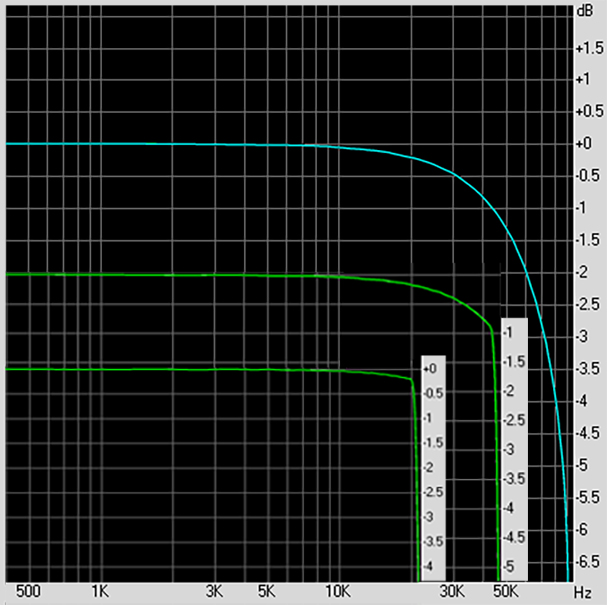
With 192kHz sampling rates (see graph above), the output adopted a middling roll-off curve, down by 0.5dB at just above 30kHz and by 3dB a little above 70kHz. With 96kHz sampling the output was maintained out to -1dB at 44kHz before dropping sharply. With 44.1kHz sampling, the high frequency response was down by 0.2dB at 20,000Hz and then dropped away sharply.
When playing from a connected computer, you may want to try having the computer network-connected by Wi-Fi. We tested using a Microsoft Surface Pro 2017, and when the computer was connected to the network via Wi-Fi – so electrically isolated from noise on the wired network – we measured the CMA Twelve’s noise level (dBA-weighted, as with all these noise measurements) with 24-bit signals at -113.9dB.
But when the computer was plugged into Ethernet, the Questyle CMA Twelve DAC seemed to pick up a bit of noise which made its way through to the analogue output, the noise level falling to a mediocre -96.3, present even when the Surface Pro was running from battery. We should stress, however, that despite weeks of using the Questyle as the main conduit of our listening, we were unaware of these noise levels. They were below the level of audibility.
Verdict
We fell in love with the Questyle CMA Twelve. It proved a versatile and very high-quality DAC, while it handled all our headphones, delivering beautiful, powerful music. If it fits your system requirements, you surely won’t be disappointed by its performance.
